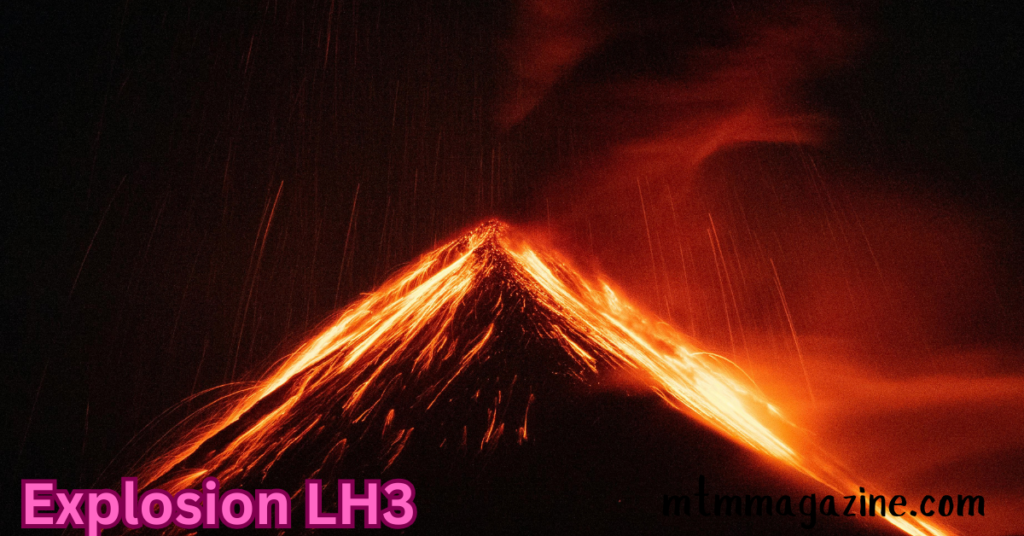Explosions are among the most destructive and dangerous events that can happen, often causing significant harm to people, property, and the environment. The term “Explosion LH3” refers to a particular type of explosion involving hazardous materials, chemicals, or industrial processes, though details surrounding such incidents can vary. In this article, we’ll explore the causes of explosion LH3, their potential impacts, and the safety precautions that can help prevent them.
What Causes an Explosion like LH3?
Explosions occur when energy is released rapidly, usually due to chemical reactions, pressure buildup, or mechanical failure. In the case of LH3-type explosions, the specific cause could be linked to various industrial or chemical processes. Here are the primary causes that could lead to an explosion like LH3:
1. Chemical Reactions
One of the most common causes of industrial explosions is uncontrolled chemical reactions. Many chemicals, when combined under the wrong conditions, can produce highly volatile reactions that result in explosions. For example, certain gases or flammable liquids, if exposed to heat or sparks, can ignite and explode. In the case of LH3, it’s possible that improper handling or mixing of hazardous materials played a role in triggering the explosion.
2. Mechanical Failures
Another potential cause of explosions is mechanical failure in industrial equipment. Factories, plants, and facilities that deal with hazardous substances often rely on complex machinery to handle these materials safely. However, if equipment is not maintained properly or is defective, it can lead to overheating, pressure buildup, or even ignition, causing an explosion. Mechanical failure could involve malfunctioning valves, pipes, or pressure relief systems, all of which may contribute to an LH3-type explosion.
3. Human Error
Human error is a significant factor in many industrial accidents, including explosions. Mistakes made during the handling, storage, or transportation of hazardous materials can lead to dangerous situations. Whether it’s improper use of machinery, failure to follow safety protocols, or neglecting regular maintenance checks, human error can significantly increase the risk of an explosion. In LH3, if workers failed to follow safety procedures or mishandled the materials involved, it could have triggered the incident.
4. Environmental Factors
Environmental factors such as extreme heat, lightning, or other natural occurrences can also trigger explosions in certain conditions. For example, if hazardous chemicals are stored improperly or in an area vulnerable to high temperatures, they may explode. External forces like a nearby fire or even a storm could also contribute to such an event.
The Impact of an LH3 Explosion
The impact of an explosion, especially in industrial or chemical settings, can be devastating. Here are the primary ways an LH3-type explosion could cause harm:
1. Human Casualties
The most immediate and tragic impact of any explosion is the loss of life and injuries. In an industrial setting, an explosion can occur unexpectedly, leaving workers or nearby residents with little time to react. Burns, blunt trauma from the shockwave, and exposure to toxic chemicals are all potential risks for people caught in the blast. Large explosions can also cause damage to nearby structures, leading to additional injuries or deaths.
2. Property Damage
Explosions cause significant property damage, often leveling buildings, machinery, and vehicles in the surrounding area. The shockwave from an explosion can shatter windows, collapse walls, and even destroy entire industrial plants. The financial cost of rebuilding and replacing damaged equipment can be enormous, putting a strain on companies and local governments.
3. Environmental Damage
Another important consequence of explosions like LH3 is environmental damage. Many explosions release harmful chemicals or pollutants into the air, water, and soil. If hazardous materials are involved, there is a risk of contaminating nearby ecosystems. Airborne pollutants can cause respiratory problems in people living in the area, while chemicals in water sources can affect wildlife and human health.
4. Economic Impact
Explosions also have a ripple effect on the local and even national economy. Beyond the cost of repairs, there are often delays in production, lost jobs, and legal consequences for companies involved. Industries may face lawsuits, fines, and regulatory scrutiny in the aftermath of an explosion. Additionally, local businesses in the area may be disrupted, further compounding the economic damage.
Safety Precautions to Prevent Explosions
Preventing explosions like LH3 is crucial to protecting lives, property, and the environment. While no system is foolproof, following these safety precautions can significantly reduce the risk:

1. Regular Equipment Maintenance
Proper maintenance of industrial equipment is essential to preventing mechanical failures. Regular inspections of machinery, pipes, and valves can help identify potential issues before they become dangerous. Equipment used to store or transport hazardous materials should be checked for signs of wear and tear, corrosion, or malfunction.
2. Strict Adherence to Safety Protocols
Ensuring that all workers are trained and adhere to strict safety protocols is one of the most effective ways to prevent accidents. This includes proper handling of chemicals, using protective gear, and following safe storage guidelines. Employees should be well-versed in emergency response procedures in case of an incident.
3. Proper Chemical Storage
Hazardous materials must be stored in appropriate containers and environments to prevent accidental ignition or chemical reactions. For example, flammable chemicals should be kept away from heat sources, and incompatible substances should never be stored together. Clear labeling and proper storage conditions, such as temperature control, are key to preventing accidents.
4. Monitoring Environmental Conditions
Facilities that handle hazardous materials should monitor environmental conditions closely. This includes using temperature controls, fire suppression systems, and gas detection devices to prevent an explosion from occurring due to external factors like heat or sparks. In areas prone to extreme weather, extra precautions should be taken to protect materials from environmental exposure.
Conclusion
The Explosion LH3, like many industrial accidents, highlights the importance of safety in environments dealing with hazardous materials. Understanding the causes—whether it’s chemical reactions, mechanical failures, human error, or environmental factors—can help prevent such incidents. By implementing regular maintenance, enforcing strict safety protocols, ensuring proper chemical storage, and monitoring environmental conditions, companies and workers can significantly reduce the risk of explosions and protect both people and the environment.
Through education and diligent safety practices, the devastating impacts of explosions like LH3 can be minimized, making industrial settings safer for everyone involved.



